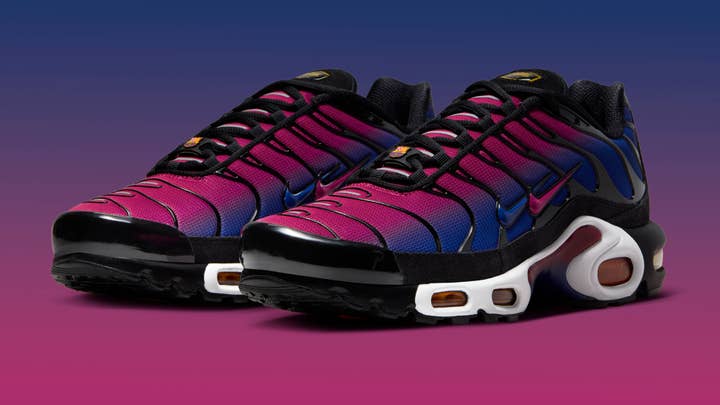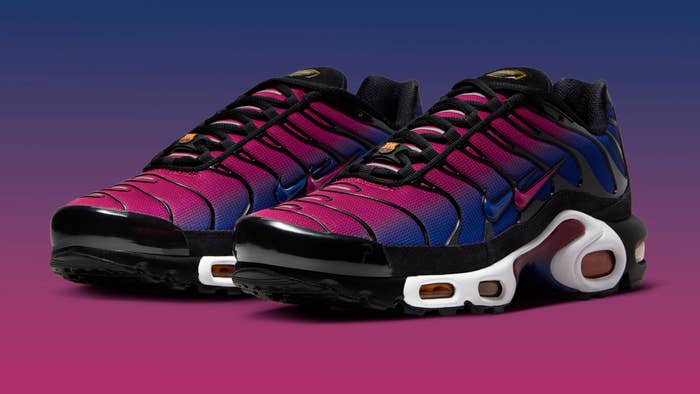
Sean McDowell, the former Nike employee who designed the Air Max Plus, still cringes when he sees that sneaker up close.
The Nike Air Max Plus was a blockbuster success; from when the shoe launched in October 1998 until July 1999, 1.5 million pairs were sold, which generated $200 million in revenue, according to an August 1999 story in the Oregonian. It’s a still-popular sneaker of curved black upper lines that bend like woozy palm tree silhouettes against a sizzling gradient of color. The Air Max Plus remains McDowell’s greatest creation from his 22 years at Nike, Inc. and the last great Air Max model of the ‘90s. But there’s something wrong with it.
“I made a mistake, and every time I look at the shoe, I realize that I actually didn’t draw the Swoosh correctly,” says McDowell. “It’s the first shoe that I did. I didn’t have a Swoosh template; there was no guideline. So the Swoosh shape is actually really short, and the tail is long on it.”
The designer retired from Nike, Inc. in 2019 after spending the last three and a half years of his career there at the Nike-owned Converse. That does not mean he has stopped thinking about the anatomically incorrect Swoosh.
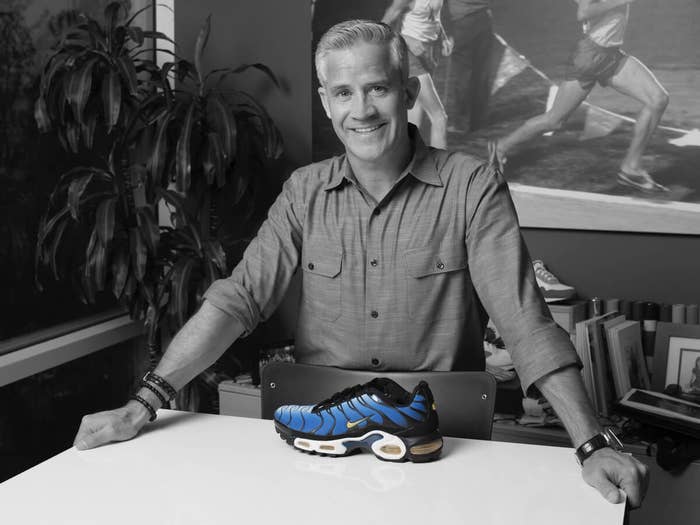
“Every time I see it in the store, it completely drives me nuts,” McDowell says.
A coming special edition of the Air Max Plus that Nike is releasing in collaboration with FC Barcelona and Dutch streetwear brand Patta threatens to double his anxiety. The Patta x FC Barcelona x Nike Air Max Plus has twice as many Swooshes, overlaying the logos on top of each other in Barcelona colors.
The sneaker, priced at €200 and made in sizes US 3.5 to 15, will be released in store and online at Patta on Oct. 13, followed by an Oct. 16 release on Nike’s SNKRS app in Europe, the FC Barcelona website, and select Nike retail partners. SNKRS in North America will sell the shoes on Oct. 17. Patta worked with Nike on a full FC Barcelona “Culers del Món” collection, which also includes a jacket, pants, jerseys, hoodies, T-shirts, and a cap.
The collaboration with FC Barcelona marks the biggest crossover moment yet for Patta, which started as a scrappy sneaker store in Amsterdam in 2004. Patta is still a relatively small operation, but its flow of Nike projects since 2009 have made the imprint globally known among sneaker collectors. The stamp of Barcelona comes with the potential for far more fans.
The gravity of working with one of the most popular football clubs in the world is not lost on the team from Patta, which traveled to Barcelona two weeks before the drop to watch a match and celebrate the coming release. The scale of the project hit Patta co-founder Guillaume Schmidt as he saw his logo flash on the giant screens at the Estadi Olímpic at the pre-launch event.
“This was definitely a moment I had to pinch myself,” says Schmidt. “Like, yo, shit, is this really happening?”
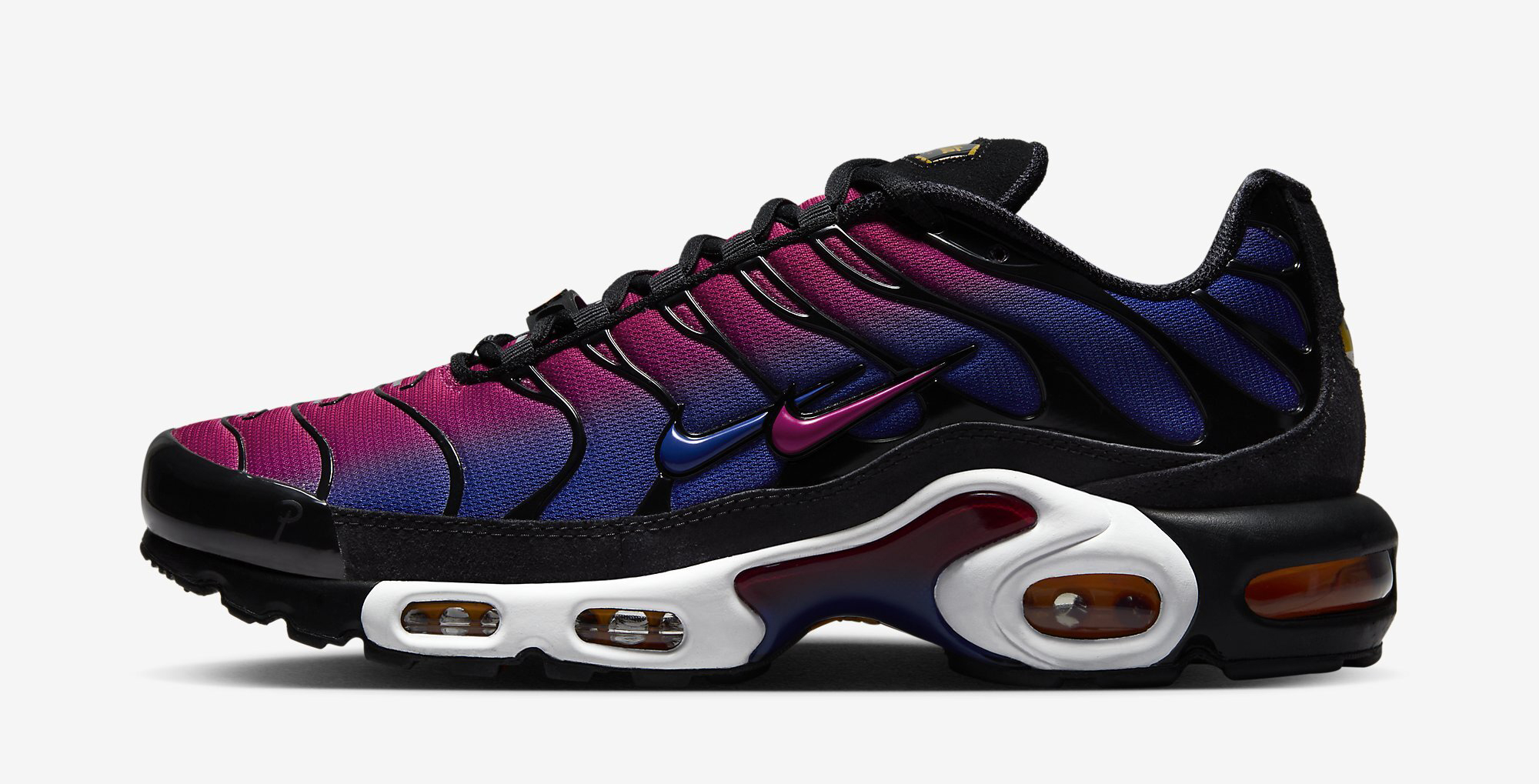
That Patta got to redesign the Air Max Plus (sometimes known as the Air Max TN) is another reason for him to feel incredulous. That Nike model has been exclusive to Foot Locker and its affiliate stores for the majority of its 25-year life, meaning special editions from outside partners are rare. Before Patta, Supreme reworked the shoe in 2020 and A-Cold-Wall had its own versions this summer, but an Air Max Plus collaboration is something that just doesn’t happen often.
“It’s like working on a Jordan 11,” says Schmidt. “Some of these silhouettes, people just can’t touch. They won’t let anyone touch ‘em.”
Foot Locker had a tight grip on the Air Max Plus from the beginning. The shoe’s origin goes back to 1991, when former Nike employee Joe Skaja developed a sneaker cushioning technology using hemispheres of air in the sole. The unit he devised evolved over the years into “Tuned Air” tech. According to the Oregonian, Skaja sold the rights to the tech to Foot Locker’s parent company in 1993. McDowell says that Foot Locker had intended to create its own in-house line of sneakers.
After Foot Locker realized it belonged more in the business of selling shoes than making them, the company turned to Nike for help. Nike purchased the rights to Skaja’s invention and agreed to make Foot Locker the exclusive distributor once it designed a shoe featuring Tuned Air. Nike later tapped a young McDowell to make the shoe a reality.
McDowell, who spent years at New Balance before arriving at Nike in May 1997, says he’d just returned from a two-week vacation in Florida when he was first briefed on the project. It required a quick turnaround.

“They had to bring something to market by the end of the year ‘98,” the designer says, “or else the patents would expire.”
McDowell immersed himself in the project. At Nike’s world headquarters in Beaverton, Oregon, he wallpapered his office with ideas for the shoe and whipped up 100 sketches showing how a model might take the Tuned Air tech in its soles.
McDowell’s boss at Nike at the time was Sergio Lozano, who was the creative director of Nike Running. Lozano reshaped the Air Max line with the wildly popular Air Max 95, shrinking the big logos while turning up the bulbous Air units on the midsoles. McDowell hoped to recreate some of his success in his own work.
The Air Max Plus used such small (albeit misshapen) Swoosh logos on its upper because the Air Max 95 did. McDowell wanted the sole to be a solid black similar to that of the Air Max 95 in the debut neon colorway, but he had to mix in some relief to make the silhouette appear lighter.
“There were a lot of complaints about, ‘That looks too heavy or that looks too clunky’—same thing with the 95,” McDowell remembers. “As soon as I added that white internal shape, that’s what made it feel fresh and unique and different. And I hadn’t seen anything like that before.”
As hard as McDowell was at work, some part of his brain was stuck back in Florida; he colored the shoes with an ombre fade made to look like a melting sunset and drew curved black lines to represent swaying palm trees. He flew to Asia as soon as he could to make a prototype.
“No pressure,” he was told, “but it’s a really important shoe, and it has a whole new technology, and we need to present the final thing in three months.”
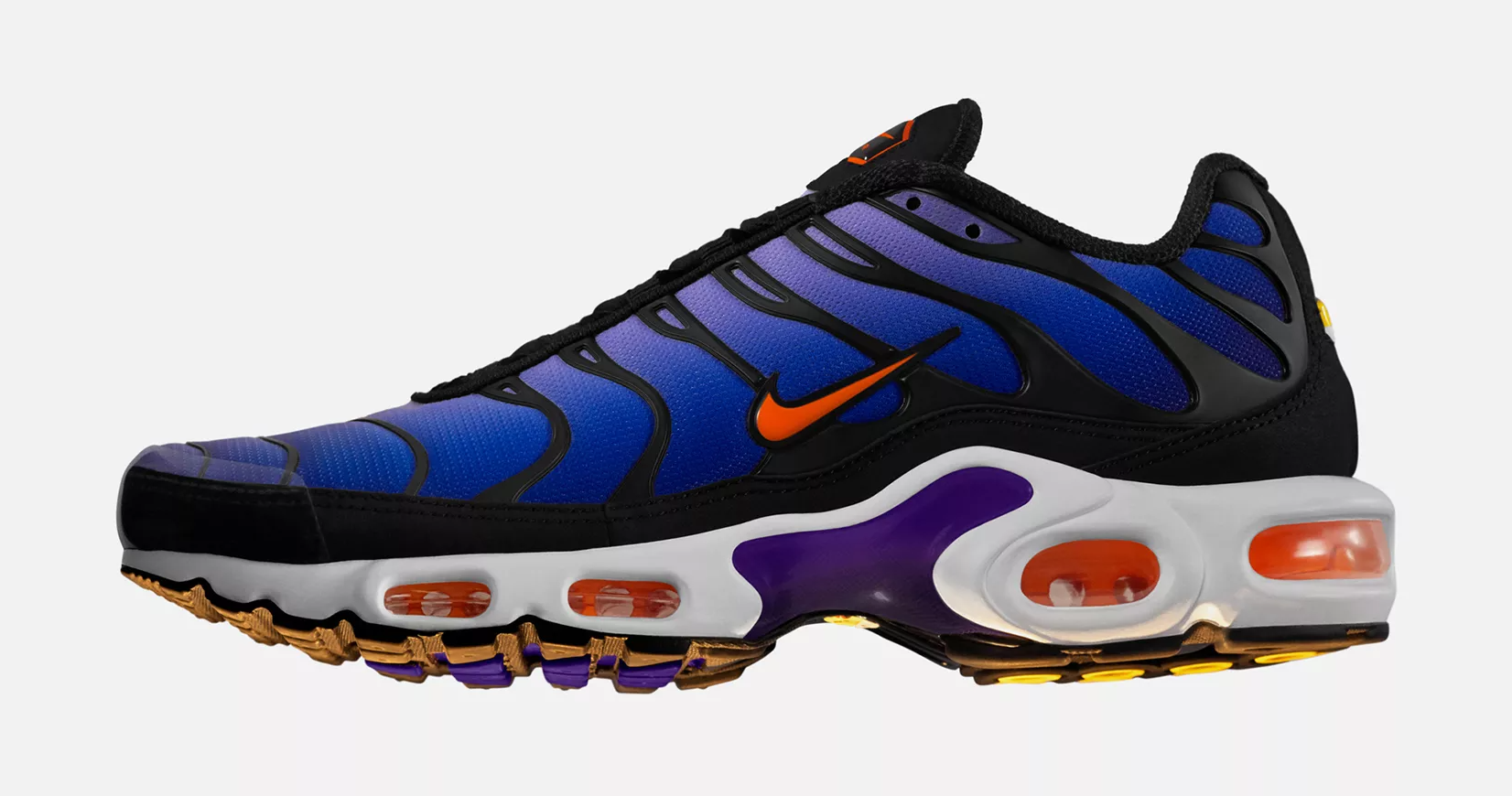
He spent three weeks of that time in the fall of ‘97 at Nike factories in Asia getting the new Air Max produced. Finding the right material to display the color fade was a struggle. Attaching the black pieces of thermoplastic that grip to the upper presented another manufacturing issue.
“We problem-solved; we built samples,” McDowell says. “I built the sample, and that’s the first time that I flew to New Jersey and met with the Foot Locker team.”
Foot Locker hated it. It was way too crazy, too loud. Even a pitch from star Nike VP Mark Parker, who went on to serve as Nike CEO from 2006 to 2020, failed to convince the retailer that the Air Max Plus could be a big shoe. Foot Locker made a conservative investment in the first round of the Air Max Plus.
“We thought that it was gonna be 500,000 units,” McDowell says. “That was the expectation. Because they didn’t like it that much, it wound up being 250,000 units. That was the first buy.”
Foot Locker’s trepidation created an accidental level of semi-scarcity that McDowell believes added to the shoe’s coveted status. It helped that it wasn’t all over the marketplace—Foot Locker and its subsidiaries were the only ones who sold Air Max Pluses until the end of the 2010s.

The Air Max Plus was touted in catalogs as “The Next Generation of Air Technology” and priced at $125. It came with visible forefoot Air bubbles and a Tuned Air unit for the heel, with “pre-molded polymer hemispheres” to protect the foot upon contact. Fine print in catalogs pushing the shoe advertised more geeky details: a roomy toe box, a midfoot TPU shank, a 5 PSI crash pad, and a 20 PSI guidance chamber in the heel air unit.
Patta’s version, which drops this week, reinterprets the sneaker’s anatomy, breathing new life into McDowell’s shoe. Where the original was a vessel for air, Patta’s builds a vascular system pumping the blau and grana blood of Barcelona supporters. The thermoplastic pieces in this context look more like veins, or ribs holding the heart. The extra Swooshes were a necessity to represent Barcelona’s blue and red palette.
“It’s about two colors; it’s about the blau and the grana, and we needed to have both,” says Schmidt. “Instead of having one on each shoe, we’re like, you know what, we need to flip it.”
He and Patta creative director Vincent van de Waal wanted the shoe to represent Barcelona down to the details. So the yellow used is not the maize of the original Air Max Plus, but that of Barcelona’s shield. The aglets are finished with the Catalan flag.
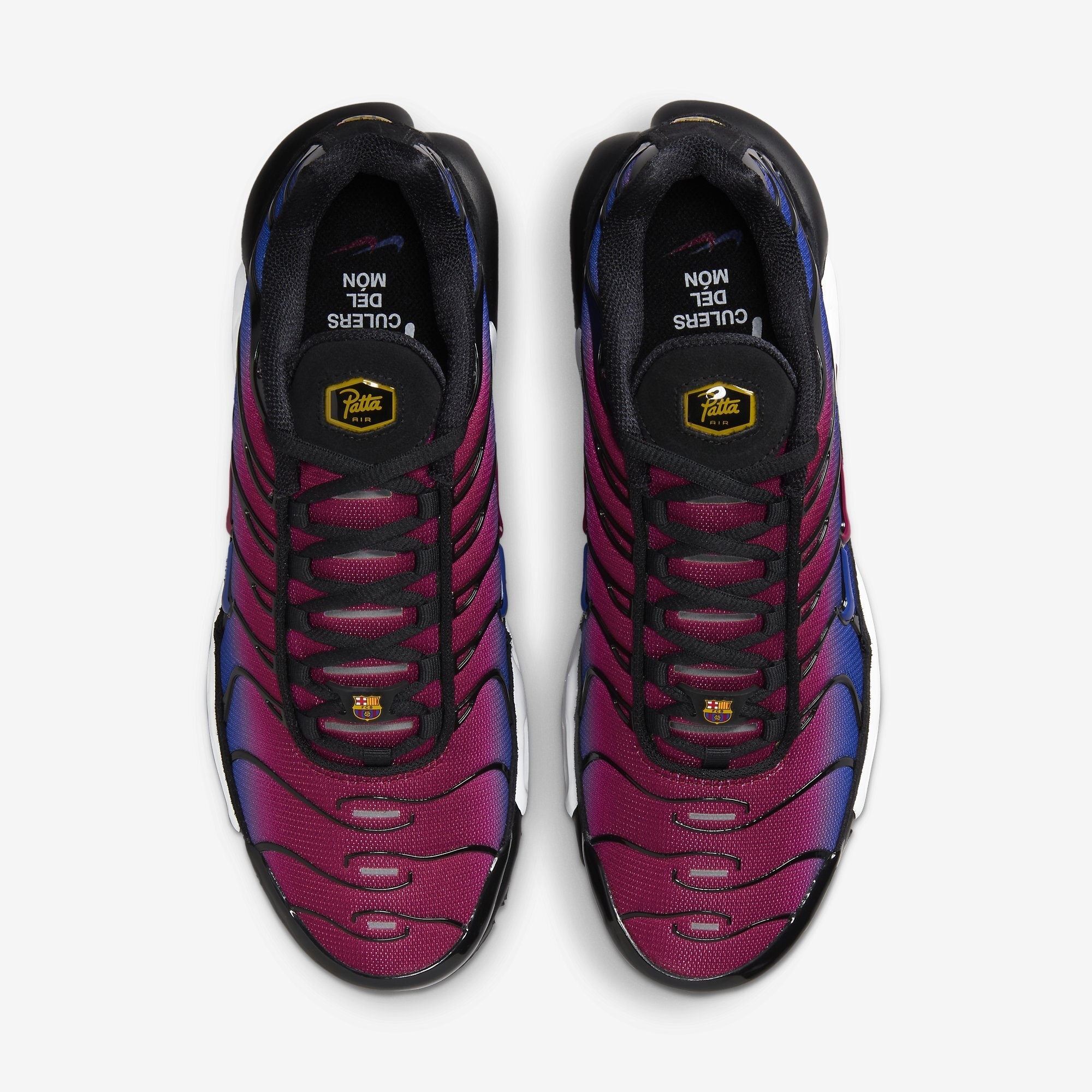
Patta and Barclona’s connection as expressed on the sneakers felt tenuous at first. When images of the blue and red Air Max TN leaked at the end of August, some wondered what the Dutch sneaker store had to do with the powerhouse LaLiga team. For Schmidt, the link is clear.
“The history between Amsterdam, Dutch football, and Barcelona has been forever,” he says.
He grew up watching Barcelona matches, and watching the flow of Dutch players and coaches to Barcelona. He can list them off—Patrick Kluivert, Ronald Koeman, Johan Cruyff—and pause to give notes on their impact.
“There’s Barcelona before Johan Cruyff and there’s Barcelona after Johan Cruyff, to be honest,” Schmidt says.
In the Dutch-Barcelona lineage, Dutch-Surinamese footballers like Kluivert, Frank Rijkaard, and Edgar Davids are sources of pride for Patta’s co-founders Schmidt and Edson Sabajo, who are both of Surinamese descent. Their cultural background informed Patta from the start—the store’s name means “shoe” in the Surinamese language Sranan Tongo.
Before Patta officially became a Nike retailer, the store’s founders filled their shelves by traveling the world looking for special sneakers in colors that were particular to different markets. They’d stock up on shoes in New York and bring them back to Amsterdam. Rather than order Nikes from a line sheet months ahead, Sabajo and Schmidt found their product in real time, in the wild.
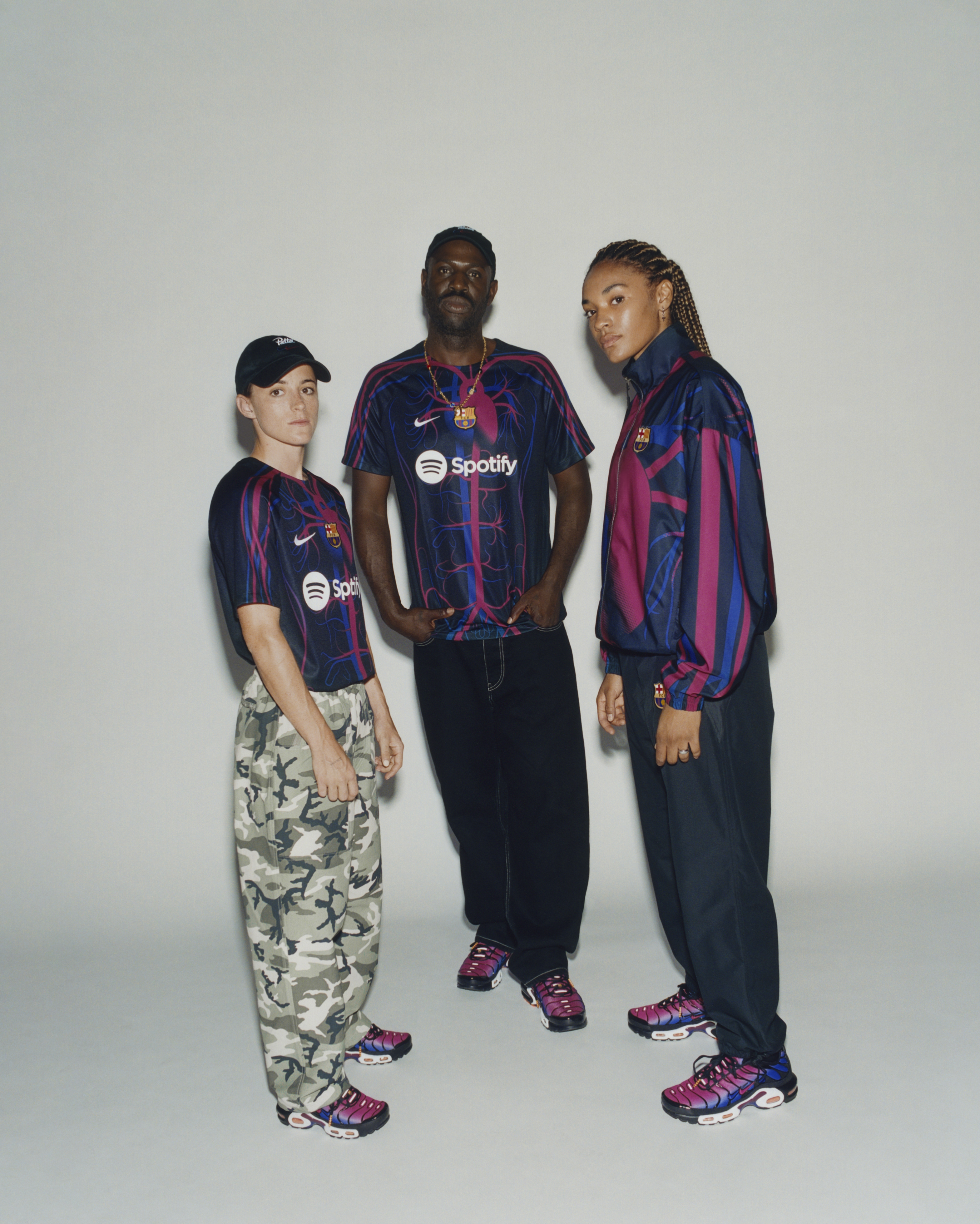
This practice required a level of taste and knowledge of which sneakers meant something. The Air Max TN was one of those shoes back then.
“It’s still one of the hottest street shoes there is,” says Schmidt. “You’ll see it everywhere.”
When did McDowell realize that the Air Max Plus was a hit? The monster sales numbers that came in the first year solidified it, but he got a piece feedback even before the shoes were made available to the public in ‘98 that confirmed he’d designed something powerful.
One day, well ahead of the Air Max Plus’s release, McDowell was headed to the Bo Jackson Fitness Center at Nike’s headquarters for a lunch break workout when he crossed paths with towering Timberwolves center Kevin Garnett. The still fresh McDowell knew well enough not to gawk at the famous athletes that made cameos on campus, so he kept his head down. But Garnett was locked in on him.
“Yo, yo, dude,” Garnett called out. “What the hell are you wearing?”
McDowell had on a prototype of the Air Max Plus.
“Where did you get it?” Garnett asked. “Where can I find it?”
The shoe’s status as a neck-breaker extended beyond Nike’s campus in Beaverton. McDowell says that when NIke first presented the design to Foot Locker, the retailer’s skeptical leadership decided to put a lone shoe on a shelf that same afternoon, right as school was letting out. The Air Max Plus immediately drew teens who marveled at the fiery new model.
Jennifer Lopez wore the sneaker for a 1999 photo shoot for InStyle Magazine, albeit while committing the faux pas of matching hers with Adidas pants. Lads in Australia became obsessed with TNs. And in the Netherlands, sneaker fiends like Schmidt put McDowell’s Air Max to work.
“It’s a rude boy shoe.” Schmidt says. “If you’re into whatever happens in the street, the TN is a part of it.”
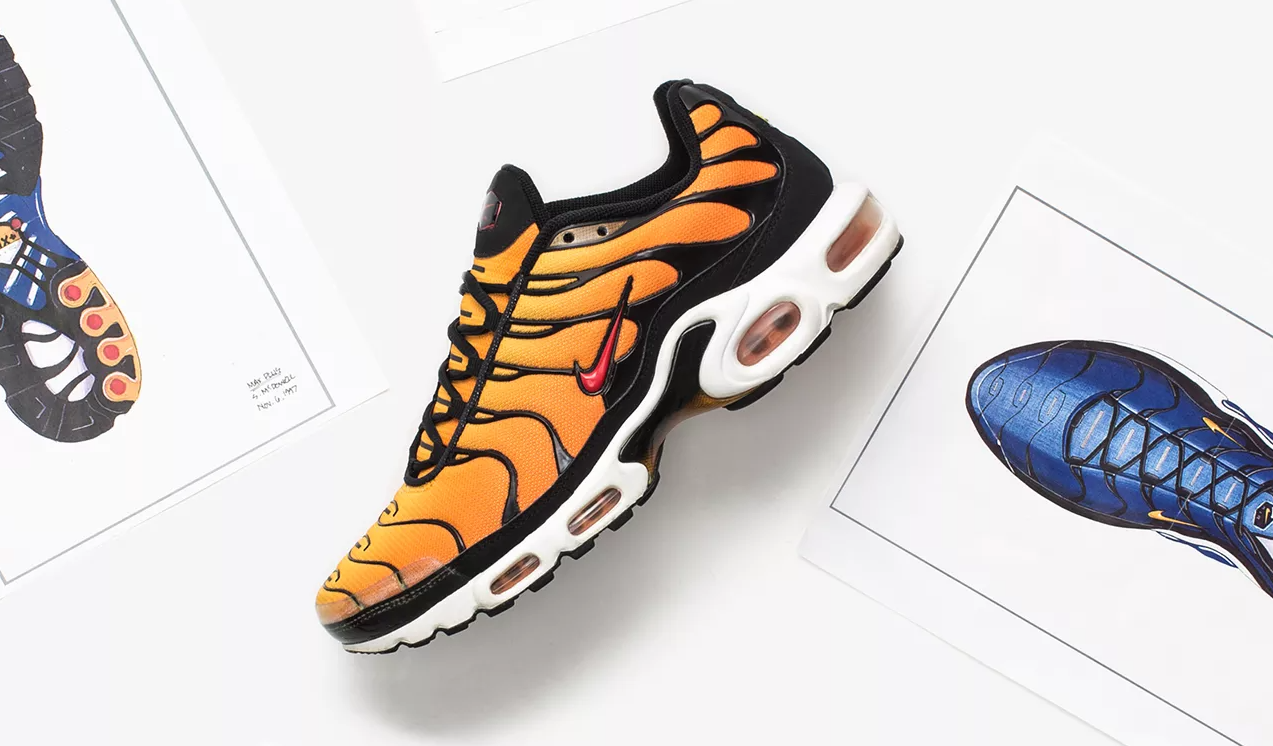
Now Schmidt and Patta are a part of the TN. McDowell approves of their remix, from the smart decision to keep the tip and heel black to the use of blue to red sublimation. He also commends Patta for pushing through the extra Swooshes—back in McDowell’s day, you couldn’t fiddle with the sacred logo, and even something like turning it backward required special permission.
The Air Max Plus designer, now a VP at furniture brand Herman Miller, keeps abreast of what’s happening with his shoe, partly through groups on Instagram that circulate images of new colorways. He’s tapped in, too, because his three children are growing into sneakerheads. McDowell can handle that—his tenure at Nike was long enough to earn him a lifetime perk of 50 percent off Nike product.
Like its small Swoosh, wonky only to the trained eyes of Nike designers and collectors, the Air Max Plus has a long tail of relevance. Its impact buoyed Foot Locker at the end of the ‘90s and kept Air Max appealing in the decades after. For a shoe designed in a short window and under a time crunch, the Air Max Plus far exceeded anyone’s expectations—its designer included.
“I never would have thought 25 years ago that it would have been this popular,” admits McDowell.

